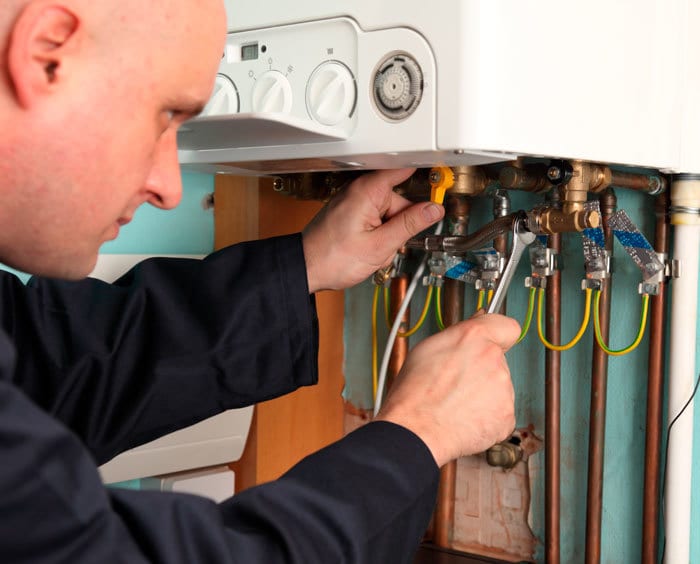Batting cleanup
Fixing others’ installation and servicing mistakes.

It’s always a bittersweet reunion with a job bid lost to competitors on both residential and commercial projects. You’ve been there too, and the call asking for your help is a Siren’s song too hard to resist. You know you want to see what corners the bums cut to undercut your bids.
“Our radiant heating doesn’t heat beyond 60° F, and the room over the garage is under 50° F,” the homeowner said.
The real salt-in-the-wound was that radiant heating had been added to the scope after I had suggested it to the architect while extolling the virtues of radiant heating.
Here was my chance to see what had been done — or should I say, not done? I arrived at the home first and parked across from the garage doors to allow the owner access to the garage for his expensive Mercedes Mayback. As he pulled into the driveway, the garage doors opened, and I spied two 80-gallon electric water heaters, a single Taco 011 circulator and just two 1/2-inch PEX tubes rising from the concrete. My design had a gas-fired high-efficiency boiler with seven 250-foot loops of 1/2-inch PEX. Their design, as it turned out, had one 1,000-foot loop! The second-floor room that was so frigid? It was open to the lower radiant floor along its width via a balcony railing.
“We were told the radiant heat would find its way up there and no loops were placed under that floor,” said the homeowner.

The estimate turned into an adjustable fix. No boiler sale, but a very happy couple and a new customer.
The fix was more costly than they could bear, so the addition’s central A/C system was swapped out for a heat pump. I’d call that a double inside the park hit.
Visiting another homeowner with a comfort problem, I arrived for a new boiler estimate and asked why they wanted the fairly new Burnham, which was in good shape, replaced.
"We had another contractor work on it and he said it needs to be replaced,” the customer said. “Ever since he was here, it stopped heating very well."
It turned out he turned the four-way mix for the radiant slab to 100% hot water (no mix), which was sucking up Btu like an energy vacuum and had also turned the high limit down to 130° F! The lower water temperature prevented the convectors and baseboard elements from heating the home (could not heat above 60° F) while the radiant addition was experiencing a fairly wide flywheel effect with temperatures rising well above the thermostat setting.
I had him turn up the thermostats for both zones, and due to the four-way mix, the boiler could not rise above 125° F. The manual four-way valve was reset to an approximate 50/50 mix and the temperature gauge began a fairly rapid rise but cut off at 130° F.
“He [the other contractor] said it had been heating to an unsafe temperature and that this was much safer, and that we need a new boiler,” the new customer said.
I reset the upper limit to 180° F and made sure that’s when the burner cut off. His wife hollered down from the first floor asking what we had done to restore comfort. The estimate turned into an adjustable fix. No boiler sale, but a very happy couple and new customer.[NK1]
Given that this was just before Christmas, I did not charge the new customer — grand slam!
Commercial customer
Two new furnaces with two A/C systems were installed in a bank branch building while a third furnace and AC coil were not replaced. They ended up with two 92% efficiency furnaces, not the 95% models we had bid. The two new down-flow furnaces had the A/C coils below the furnace, and they had failed to retain the prior duct clearance above the floor that previously provided sufficient clearance for the old condensate pumps.
The fix was to whack a hole in the plywood deck — above the tellers below — and suspend a condensate pump on thermostat wire while wrapping the ends around drywall screws. No condensate traps on the A/C coils and evidence that this had caused condensate to be held back due to the negative air pressure caused by the Venturi Effect of air rushing by the drain outlet, which had stained the sheet metal. The suspended ceiling tiles below clearly indicated condensate had occasionally dripped on them, but had not yet soaked through to the finished side.
The safety disable switch on the lone condensate pump (receiving condensate from three furnaces and three A/C coils) had been ignored with the two wires terminating in air. Short pieces of CSST tubing had been used on the two new furnaces that had been hard-piped and the CSST passed through the cabinets to the gas valves. No electrical bonding in advance of the CSST had been installed, and the breaker panel was just a few feet away. All low voltage and high voltage wiring was installed through the furnace cabinets without protection (no box connectors or rubber grommets) and stretched tightly over the cabinet’s sharp edges. Adding insult to injury, the old filter racks were gone. No air filtration, but the property manager had figured that out and required the installers to correct that. Their solution? Cut the return plenum ells and install sheet metal ledges on three sides to hold filters while adding poorly fitting rectangles of sheet metal over the holes attached with self-tapping screws. Pricing submitted to correct all defects was accepted. The head of facilities stated he would never again use the “other guys.” Home run!
kelvinjay / vm, iStock / Getty Images Plus via Getty Images.
This article was originally published in Plumbing & Mechanical in April 2017.